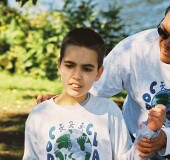
FRIDAY, Dec. 18 (HealthDay News) — In a finding that demonstrates that the prevalence of autism continues to rise, a government report released Friday finds that one in every 110 children in the United States has been diagnosed with the developmental disorder.
In fact, the number of 8-year-old children with autism jumped an average of 57 percent between 2002 and 2006. This rise is part of a trend predating the 1980s, when autism was still considered rare. Previously, the national estimate was one in 150 children has autism.
“If you look back over the last two decades, you see an increase of 600 percent in the prevalence of autism spectrum disorders,” said Geraldine Dawson, chief science officer of the patient advocacy group Autism Speaks. “The important call to action is that we need answers to understand why we’re seeing this staggering increase.”
However, the authors of the report, published in the Dec. 18 edition of Morbidity and Mortality Weekly Report, a publication of the U.S. Centers for Disease Control and Prevention, did not rule out increased surveillance and other factors as being responsible for the higher numbers.
“It’s impossible to say how much is a true increase and how much is in identification,” Catherine Rice, a behavioral health scientist at the CDC’s National Center on Birth Defects and Developmental Disabilities, said during a Friday morning news conference. “A simple explanation is not apparent, and a true risk cannot be ruled out.”
“The CDC considers this a significant public health concern,” continued Rice. “This helps us know that it’s important to look for causes of autism and to take these data to help us intervene for those individuals who are here now.”
Autism spectrum disorders (ASD) are a group of developmental disabilities once lumped under the label “autism.” Experts now realize there are varying degrees of disabilities, which manifest mainly in socialization, behavior and, perhaps most importantly, language and communication.
This latest report used data from the Autism Developmental Disabilities Monitoring Network, which collects data from health and educational records in 11 states around the United States: parts of Alabama, Arizona, Colorado, Florida, Georgia, Maryland, Missouri, North Carolina, Pennsylvania, South Carolina and Wisconsin.
The study looked only at 8-year-olds, as children have usually have been diagnosed by this age. The average age of diagnosis was 4.5 years, which is considered fairly late for interventions.
In 2006, 0.9 percent of more than 300,000 children (representing about 8 percent of the total U.S. population of 8-year-olds) surveyed had an ASD.
“The most consistent pattern was an increase among boys,” Rice reported. “Prevalence was four to five times higher for boys than girls.”
Prevalence increased 55 percent among whites, 31 percent among blacks and 90 percent among Hispanics.
Prevalence rates ranged from a low of 4.2 per 1,000 children in Florida to a high of 12.1 per 1,000 children in Arizona and Missouri.
More males were diagnosed with an ASD than females, approximately one in 70 boys and one in 315 girls. This represents an average increase in boys of 60 percent and, in girls, 48 percent.
“We need to understand what environmental factors may be contributing to this increase and I believe we need to cast a very wide net to look at a range of environmental factors, beginning with the pregnancy period and through child development, to understand how the environment may be interacting with what we know are underlying genetic susceptibilities,” Dawson said.
Although research into these factors are still in their infancy, Dawson said current hypotheses include greater use of assisted reproductive technology, premature birth, infections the mother may have experienced during pregnancy, childbirth complications, prenatal exposure to environmental toxins and dietary factors.
“We believe that it’s going to turn out very much like cancer in that it’s not going to be one single thing that’s causing autism, just like there’s not one single thing that causes cancer,” she said. “There’s going to be different forms of autism in terms of causes and we’re going to likely find a wide range of environmental factors contribute.”
“But until we invest more money in doing large-scale studies we’re not going to be able to find the answers,” Dawson said.
The findings do not lay to rest the controversy surrounding whether or not thimerosal, which was once a component of children’s vaccines, contributed to autism risk because the preservative was still being phased out at that time.
More information
Visit the U.S. National Institute of Neurological Disorders and Stroke for more on autism spectrum disorders.

